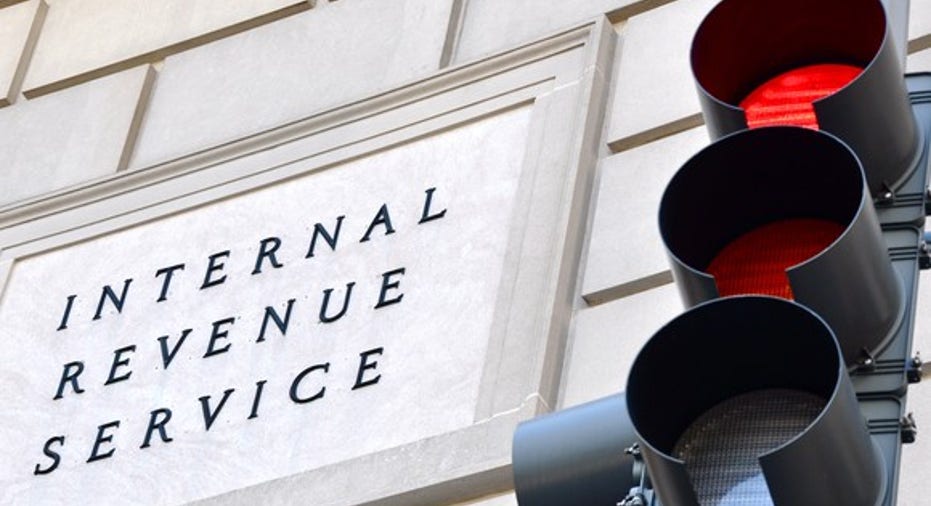3 Ways the IRS Pays You to Save

Saving for retirement and other long-term financial goals can be extremely hard, and the fact that the IRS taxes your income is one reason why many Americans don't have enough left over to save. However, what many people don't know is that the IRS will actually pay you to save, and those of all income levels can benefit from at least some of these favorable tax provision.
Below, we'll look at three ways that the IRS pays you to save. Take a look and figure out which one -- or more! -- will work best for you and your financial situation.
Image source: Getty Images.
1. Up-front deductions for traditional IRA contributions
The most obvious tax break that the IRS offers savers is one that's quite familiar to many last-minute tax filers. When you make a contribution to a traditional IRA, most taxpayers can deduct their contribution from their gross income. The net result is a reduction in your tax bill that can in some cases be greater than 40% of the amount that you contribute. Moreover, the deduction is one of the only breaks that's still available now for the 2016 tax year, with IRA contributions for 2016 allowed through the mid-April filing deadlines.
There are limits on the use of traditional IRAs. Maximum contributions for 2016 and 2017 are $5,500 if you're younger than 50 and $6,500 if you're 50 or older. More importantly, if you or a spouse is covered by an employer-sponsored retirement plan at work, then your IRA deduction might be limited or eliminated if your income exceeds certain levels. Nevertheless, with so much flexibility, IRA contributions are a great way to give yourself a reward for saving.
2. Income exclusion for 401(k) contributions
Similarly, the IRS gives tax incentives to those who use 401(k) plans and other employer-sponsored retirement plans at work. The mechanics of how 401(k) contributions work is slightly different, but the net result is the same. With 401(k) contributions, money is taken out of your paycheck before you ever see it and deposited into your account with your employer. That money reduces the amount of taxable income for federal tax purposes that your employer reports to the IRS on your W-2. Therefore, you don't have to take a deduction on your tax return, because the amount already got excluded when your employer set it aside as you instructed.
No income limits apply to 401(k) contributions, and the limits are much higher, with maximum contributions of $18,000 in 2016 and 2017 for those under 50 and $24,000 for those 50 or older. The only downside is that you can only reduce your income in the year in which you contribute, so it's too late now to do anything to cut your 2016 tax bill. What you do now, however, can make an even bigger difference in what you pay in taxes in 2017.
3. Retirement Savings Contributions Credit for low- and mid-income taxpayers
The IRS does something extra for people with relatively modest incomes who make contributions to IRAs and 401(k)s. If your income is below certain levels, then the IRS offers a credit of between 10% and 50% for the first $2,000 you contribute. This provision is known as the Retirement Savings Contributions Credit, or Saver's Credit for short. In effect, the Saver's Credit looks like a matching contribution from the federal government, and it comes in addition to any matching that your employer might offer.
The amount of the credit depends on your income and filing status, with singles having adjusted gross income of up to $31,000 and joint filers with income up to $62,000 potentially being eligible. You can get the full details on the Saver's Credit here, but you have to remember to file the necessary paperwork in order to get what can be up to an extra $1,000 off your tax bill.
It's hard to save, but these three provisions from the IRS can give a boost to your savings strategy. Take advantage of them and pay a little less come tax time.
The $16,122 Social Security bonus most retirees completely overlook If you're like most Americans, you're a few years (or more) behind on your retirement savings. But a handful of little-known "Social Security secrets" could help ensure a boost in your retirement income. For example: one easy trick could pay you as much as $16,122 more... each year! Once you learn how to maximize your Social Security benefits, we think you could retire confidently with the peace of mind we're all after.Simply click here to discover how to learn more about these strategies.
The Motley Fool has a disclosure policy.